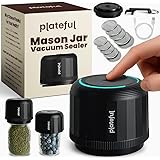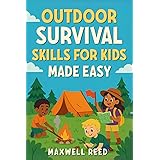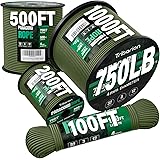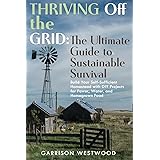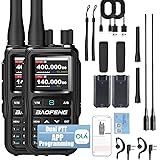Imagine a sudden power outage late at night. The lights flicker, then darkness falls completely. This unexpected event highlights the crucial need for preparedness. As the video above demonstrates, having an everyday emergency bag (EDC) is not merely a hobby. It is a fundamental aspect of personal safety and readiness.
A well-prepared everyday emergency bag ensures you possess vital tools. These tools address immediate challenges. They provide peace of mind in unpredictable situations. This article elaborates on key components. It also explores additional considerations for your personal survival gear.
Understanding Your Everyday Emergency Bag
An everyday emergency bag differs significantly from a bug-out bag. The EDC is designed for immediate, short-term needs. It focuses on issues arising in daily environments. These may include minor accidents, unexpected delays, or temporary disruptions.
Conversely, a bug-out bag supports extended survival. It is for evacuating a location. The EDC, however, prioritizes accessibility and compactness. It contains essential items for urban or suburban scenarios.
Key Components of Essential Survival Gear
The speaker in the video highlights several crucial items. Each component serves a specific purpose. Understanding these roles is vital for effective preparedness. Your selection should reflect your personal circumstances.
Self-Defense Tools
-
Handgun and Ammunition: Responsible Carry
A handgun provides a means of self-defense. This is crucial for personal security. The video mentions carrying 30 rounds. This typically implies two standard capacity magazines. Training and legal compliance are paramount for responsible carry.
Choosing the right caliber is important. Common choices include 9mm or .45 ACP. Furthermore, proper concealment and regular practice enhance proficiency. This ensures effective use when necessary.
Water Purification
-
Lifestraw: Ensuring Hydration
Access to clean drinking water is non-negotiable. A Lifestraw is an excellent personal water filter. It removes bacteria and parasites from contaminated water sources. This prevents waterborne illnesses.
However, it does not filter viruses or chemical contaminants. Therefore, consider backup purification methods. These may include water purification tablets. They offer a compact, lightweight alternative.
Illumination and Navigation
-
Flashlight: Piercing the Darkness
A reliable flashlight is indispensable. Power outages or navigating dark areas become easier. Choose a flashlight with sufficient lumen output. It should also have a durable casing.
Consider models with multiple light modes. A strobe function can signal for help. Always carry spare batteries or a rechargeable unit. This ensures consistent readiness.
Cutting and Utility Tools
-
Knives: Versatile Cutting Tools
The video mentions two types of knives. A primary folding knife is practical for everyday tasks. A secondary fixed-blade knife offers greater strength and durability. These tools are invaluable.
They assist with opening packages, cutting cordage, or preparing kindling. Regular sharpening maintains their effectiveness. Choose knives with a comfortable grip and secure locking mechanism.
-
Shovel: Multi-Purpose Implement
A compact, foldable shovel offers surprising utility. It can be used for digging trenches or burying waste. In a survival context, it can aid in creating shelter. Some models feature additional tools. These include a pickaxe or saw blade.
First Aid and Medical Preparedness
-
Comprehensive First Aid Kits: Trauma Care Essentials
A personal first aid kit is critical. The video highlights key trauma items. These include a tourniquet, stop bleed gauze, and a CPR mask. Such components are vital for severe injuries. Immediate bleeding control can save a life.
Tourniquet: A critical device for severe arterial bleeding. Training on proper application is essential. Common types are CAT and SOFTT-W tourniquets. These are proven effective.
Stop Bleed (Hemostatic Gauze): This specialized gauze contains agents. These agents accelerate blood clotting. It is packed directly into deep wounds. This helps control severe hemorrhages.
CPR Mask: A barrier device for mouth-to-mouth resuscitation. It protects the rescuer from pathogens. This ensures safer delivery of CPR. Knowing basic CPR techniques is highly recommended.
In addition, a comprehensive kit should include basic wound care items. These are bandages, antiseptic wipes, and pain relievers. Also, consider any personal prescription medications. Allergies should also be noted.
Expanding Your Everyday Emergency Bag Considerations
Beyond the video’s mentioned items, other elements enhance readiness. These additions provide layers of security. They address a wider range of potential scenarios. Consider these carefully for your personal everyday emergency bag.
Communication and Navigation
Maintaining communication is crucial. A fully charged mobile phone is standard. However, consider a small power bank for recharges. A whistle can also signal for help. This is effective over long distances.
A compact map of your local area is beneficial. A small compass can also aid navigation. GPS signals may not always be available. Redundancy in navigation tools is a smart strategy.
Fire Starting Capability
Fire provides warmth, light, and a means to cook. It also purifies water. A simple Bic lighter is effective. Waterproof matches offer another option. A ferro rod provides sparks reliably. Carrying multiple fire starters is prudent.
Shelter and Warmth
Unexpected exposure to elements can be dangerous. A compact emergency blanket is lightweight. It reflects body heat efficiently. A large, durable trash bag can serve as a makeshift poncho. It can also create a temporary shelter. These items are small yet impactful.
Food and Sustenance
For short-term emergencies, a small caloric food item is wise. Energy bars or survival tabs provide quick fuel. They are compact and have a long shelf life. This ensures you maintain energy levels during stressful times.
Personal Identification and Cash
Always carry your identification. Keep a small amount of cash on hand. Digital payment systems might fail. Small denominations are useful for incidental expenses. This prepares you for various transactions.
Maintenance and Training for Your EDC Survival Gear
Simply assembling an everyday emergency bag is insufficient. Regular maintenance of its contents is vital. Check expiration dates on food and medical supplies. Rotate batteries in your flashlight. Ensure all tools remain in good working order.
Furthermore, training enhances your preparedness. Learn basic first aid and CPR. Practice using your self-defense tools safely. Understand how your water filter operates. Familiarity builds confidence and competence. This makes your survival gear truly effective.
Finally, your everyday emergency bag should be adapted to your specific environment. Consider your daily commute. Think about local threats. Tailor your gear to meet these unique demands. This personalized approach ensures maximum utility.
Gear Up for Answers: Your Everyday Survival Q&A
What is an everyday emergency bag (EDC)?
An EDC is a bag designed for immediate, short-term needs that might arise in daily environments, like minor accidents or unexpected delays. It contains essential items for urban or suburban scenarios, prioritizing accessibility and compactness.
Why should I have an everyday emergency bag?
Having an EDC ensures you possess vital tools to address immediate challenges and provides peace of mind in unpredictable situations. It is a fundamental aspect of personal safety and readiness for unexpected events like power outages.
How is an everyday emergency bag different from a bug-out bag?
An EDC is for immediate, short-term daily needs and is compact for urban environments, focusing on temporary disruptions. In contrast, a bug-out bag is designed for extended survival and evacuating a location.
What are some basic types of items to include in an everyday emergency bag?
Key components include self-defense tools, water purification items like a Lifestraw, a reliable flashlight, versatile knives, and a comprehensive first aid kit for basic wound and trauma care.


